Summer has hit and that means it’s officially con season! And that means merch! So much merch! Since time immemorial fans of tabletop have done their best to incorporate every aspect of their hobby into life with mugs, music, themed coffees. But now being a nerd bigger business than its ever been, and new people from all walks of life are discovering the joy of board games, the thrill of TTRPG. Can the old boutique crafters keep up? I spoke with Erin Zipperle and Conrad Pflumm, the Founder and COO, respectively, of young tabletop lifestyle brand Rollacrit about the tabletop market and what it’s been like breaking in.
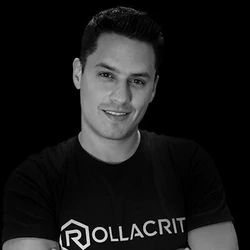
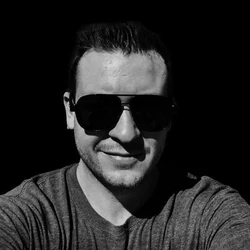
Dan: So first thing I wanted to ask was, what’s your background in gaming?
Erin Zipperle: Aside from being just a gamer forever, I got into at least this industry back in late 2011-2012 when I started working with ThinkGeek. From there, I ran a lot of marketing in that space, and also was part of the team that grew it until we got acquired by GameStop.
So I’ve been making product and marketing products for video games and pop culture pretty much mostly for a lot of years until getting into tabletop. But we had the license for wizards of the coast and things like that a couple times, to be able to make product. And so I was always in those meetings coming up with product ideas, but we never really did much in the tabletop space for some reason, and that kind of frustrated me.
To a point where we have tons of cool collectibles and things like that for video game players, and people to build out their video game rooms. But there’s people that have their D&D rooms in their gaming rooms that don’t really have much of anything except for dice and accessories and things like that they can use for their games.
Rather than like toys and statues and things like that, that are collectibles that kind of show your geekdom in the tabletop space. And so we started Rollacrit to really change that. We’ve done it for video games and pop culture, so it’s time to get that treatment for tabletop.
Conrad Pflumm: I personally have been a D&D player for years and years and years. I don’t come from the tabletop space as far as like a business sense, I actually come from the tech side of things.
Erin I went to college together, and we went to our local days of nights hobby shop, and I still have the 3.5 edition books that we used then. The thing that always drew me to the table top space was the community building aspect, because the way that you are able to just develop connections with people in such a different sense, that’s always intrigued me.
It’s something that I think is pretty unique in this time, because a lot of people still thrive on the ability to feed off of the audience you’re playing with. How you interact with certain people can be completely different, even though you’ve been best friends with them for years and years and years, when you sit down at a table you start playing a game.
Now, all of a sudden that person who’s a little shy or bashful becomes a total cut throat. It’s great to see like different sides of people come out of that, and I don’t know of a lot of ways that this still gets people to step out of their comfort zone and do that stuff.
Erin: I played chess a lot with my dad, my he was also very into sci-fi/fantasy, which is a lot of the stuff that I got into to. You can’t see it but my entire basement is done up like the Death Star
Dan: And that’s fantastic. (EN: It is)
Erin: It’s insane. And I just saw Devo last night…I’m obsessed with this whole world. But the strategic part of it is really where I jumped in. That’s why I really got into Magic The Gathering. I had cousins that played, and I didn’t really know what half the cards meant, but I loved collecting the cards for the art, because the fantasy art was so cool.
I think I was like eight or something when I finally started playing, and then that’s why I played Magic nights all the way through college. That’s when Conrad and I met up, and where I was playing Magic at the same time is where we ended up buying our D&D books. Yes…that’s…wow. Never really thought of all of that. It’s ingrained.
Dan: Things have changed a lot since even I started playing. D&D is like mainstream now, board games are mainstream now. People know D&D players better than they know some actors. It’s interesting coming in from before all this seeing it take off.
Erin: It is! Growing up we had family game night, we weren’t like a Partridge Family or anything, but on Sunday nights we tried to play different games. So it wasn’t the same thing, we weren’t playing Monopoly every night. We would play different weird stuff that we would find at the Goodwill or used from the back of a game shop.
How we play games has changed a lot, though. I love video games and I love couch co-op, because I like the human connection. I love people coming over, you order pizza, you play games all night. But that doesn’t exist really anymore.
Nowadays you just play video games by yourself or online, we don’t have that human connection anymore. But we’re still human, we still need to be around other people. Tabletop games let you have that connection.
Eventually it becomes so second nature that you don’t really realize that the shift is happening. But that shift is why this feels so vital, because why not make a d20 bowl to put your chips?
Dan: What makes Rollacrit uniquely equipped for this challenge?

I think the difference is Conrad and I own the company. We don’t have tons of cash to keep just dumping into projects, but we’re growing as much as we can and hopefully fans can find us and support us. That’s our goal, to continue making stuff like that. wven though we made a game as our first Kickstarter, we’ll be doing a lot of product as Kickstarter moving forward. We want to run this stuff into retailers. Card sleeves and dice, sure, all day you can get them all day. But we want some unique stuff on the other side of the aisle too that’ll really enhance things..
Dan: When you see that hole in the market, you see that gap, you definitely touched on a little bit. But we’re thinking of what gamers want, it’s a different. abletop gamers are very big on buying stuff, it’s not a cheap hobby either. There’s an interest there, but they’re very discerning about that, because of how high quality a lot of the products are. Is there a difference in how you think about marketing and developing stuff for analog tabletop gamers, versus when you’re thinking about general geekdom or video games or that kind of thing?
Conrad: I would say that for one thing, because it hasn’t been mainstream for so long, there’s a lot of tight-knit groups of people that are very passionate and very vocal about the games that they enjoy playing. That’s obviously not unique in this space, but I think that because a lot of people have had time to connect over the years, that information passes very quickly.
When we look to marketing, and we look at trying to connect with people, it needs to be authentic. That’s the biggest thing, If you’re not authentic with how you are presenting your product, in demonstrating that it has value to people, if you’re just trying to sell a product, they can see that. If you’re just trying to exploit a gap in the market, they’ll know it.
That’s what I think makes us pretty unique in that, because yes, you’re right, this isn’t a cheap hobby. There are definitely people who are willing to spend money when they see the value that’s there, but they’re also not willing to just throw it away because you made something cool. They want to know that you’re actually a fan or enthusiastic in developing and growing that space with them, not just making a quick buck.
Erin: Yes. I think the shotgun spread for video games, but mainly pop culture, is easy to do. If you just say “here’s a new thing for Star Wars” then sure, it’ll sell. But in tabletop you need to be welcomed to the table organically. We can’t just shoot everything out as fast and cheap as possible and assume it’ll get bought. We have to have time to earn that trust.
Conrad: It’s not just the people either, it’s also the industry. Even though everybody’s in the table top and board game space, things still feel very siloed. There’s a lot of enthusiasm amongst everybody to do their thing, but not a lot of crossover and engagement with other businesses and opportunities to promote each other. Changing that is a big part of how we’re developing Rollacrit as a brand and a producer.
We’ve been able to take on a partnership with Gen Con, and really get into that space there, so we’re their official store for Gen Con. We’ve partnered with Asmodee for a license around (Settlers of) Catan, and the Catan stuff that we’re making very unique in the fact that it’s not a logo slap. We’re not trying to come out and just put the sun setting (EN: The Catan Logo) on a shirt and mark it up to thirty dollars.
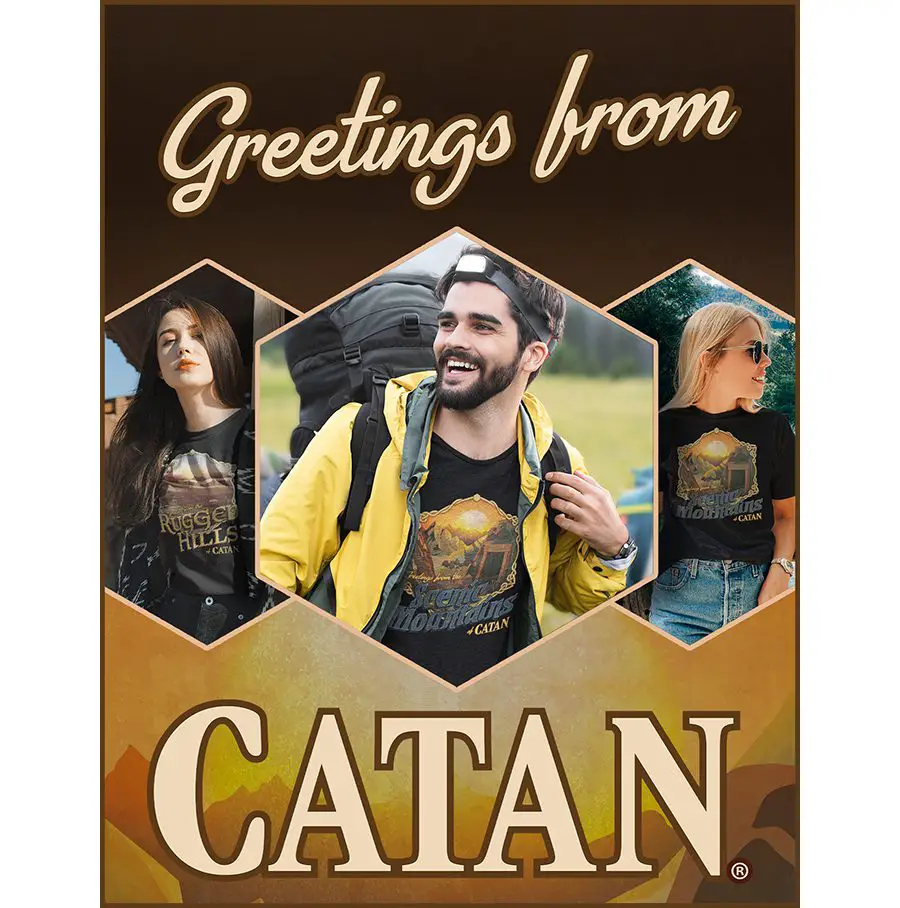
Dan: The thing I think people like about your shirts is that you can wear them, and if someone is into board games, into gaming, they’ll know. But if they’re not, you’re not going to look like some weird dork with a logo on your shirt, right? I mean, I love a logo, but I don’t necessarily want to look like a booth worker.
Conrad: We have an interesting approach for our next launch on our Catan products. We’re approaching this is almost in an roleplaying way. We’re kind of pretending like what would it be like to live on the islands. What would it be like if you lived on the island and it’s now modern times, it’s no longer settled. So the next collection is going to have kind of a feel of that a little bit to it.
Dan: And so, and you also are, you know you’re coming from the ThinkGeek space, and you mentioned that the idea of the lifestyle. You’re aiming at a lower price where a lot of the market right now is expensive luxury brands.
Erin: Because you have to make small runs of these things, that’s the hardest part, is you can’t in amass, like you can make, for Star Wars products you could make 20,000 units and the MOQ (EN: The Minimum Order Quantity, the number needed to sell to cover production costs) is maybe 4,000. In table top, like if that same MOQ’s 4,000 you’re going to have to increase the price to be able to actually afford that run, because it’ll take a lot longer to sell that. And that’s what’s tough.
Dan: I want to touch on Heroes of Barcadia. Which was an interesting turn, because you’re thinking of lifestyle branding, accessories all that stuff…and your first big project is a game?
Conrad: It sounds as crazy as it feels, believe me. It goes back to what I was talking about how you kind of need to prove that what you’re doing, right?
We knew for a long time that we wanted to make a big splash in the space, and one of the things that we had been working on for a while was Heroes of Barcadia. It actually started years ago as an April Fool’s Joke at ThinkGeek. It kind of fell to the wayside until we got a call from someone who’d actually designed it and we figured hey, let’s go with it.
We really felt that it did a good job of representing Rollacrit as a brand, because it’s looking at something that already exists in a different way. So dungeon crawler games are not uncommon, but it adds something with a completely different aspect and a different way of looking at that concept with the liquid life system.
There aren’t games out there where people are using cups as they’re playing miniatures, and those cups actually contain your health. And being able to play a game that is both fun and lightweight, and accessible to a wider range of an audience, because like you said with our designs, we want it to be able to speak to people that maybe don’t get it yet, that’s what Heroes of Barcadia does, right?
We’re finding that there are a lot of people who haven’t been interested in looking at a board game are very interested in playing this game with us when we tested it. It’s opened up a lot of people’s eyes to what board games could be for them, and the fun that they could have.
And at the same time, because we’re board game people, when you start to play the game, you’ll realize that there are actually some pretty complicated mechanics in there. You can tie together some really great instant action cards and power-ups and abilities that your hero has to create some really advanced strategies around this stuff if you want to. Or you can just smash the door open, walk into the next room and battle a monster, it’s up to you.
Erin: Yes, it’s as strategic as it wants to be or as brutal as it wants to be. I think it’s probably one of the best gateway games, and the drinking component really just lightens the mood for if anybody is intimidated by that. I don’t really drink that much, most of the people at Rollacrit don’t really drink that much, so it’s really weird to have a drinking game per se, but that’s what everyone’s calling it.
For the Kickstarter aspect specifically, we were seeing Kickstarters that were doing five million dollars, three million dollars, and we’re like ‘this is great, this is great for a game’. They have tons of backers, but how are they activating their audience? What are they doing? Once that person gets the game and they play that game, how do they show that they like that game? And what in that world can we make product for? So it was all about research, really. How do we make a Kickstarter, how do we run it, how do we handle production? It let us look at how the industry worked from the inside, especially during COVID-19.
Dan: It was very successful and at every convention where I’ve seen it on display people have been very interested in it.
Conrad: Yes, we are very excited to finally get it out of production, and into the world of “you can buy it now”. We’re getting to the point where we can stop saying “pre-order” and start saying “order.” We’re very anxious and very excited for people to actually see what it is that we were able to put together. Because it looks great, it’s a ton of fun. As Erin said, I think the accessories that we created for it do a great job of enhancing the game, and can still be super functional. Like, one of my favorite things is the point of conflict resolution that we came up with, where it’s just “I drink or you drink.” You could use that in any situation in life, you know what I mean? Like, you can bring that out with you anywhere. Settle a dispute, not a problem.
The pint glasses, it was a huge thing that people wanted us to provide glass options, and we hadn’t considered that. Because we did a ton of research about these cups that come in the game to make sure that they were super durable and high quality to print on. We did all this work on the recessed bottoms to make them not stick to the card, but people still wanted pint glasses. So we went and we made sure to source these pint glasses, and they came out great. When people see them, they’re going to be blown away. But like their glasses that you want to keep in your cupboard, and use on a regular basis.
Erin: We launched the game at a boardgame cafe in Philadelphia, Thirsty Dice. And we thought that really, every board game cafe should have a copy of this. So we wanted to make sure that the glasses were industrial dishwasher safe, which is a really hard thing to do. The amount I know about plastic now is…it’s too much.
Dan: So you’ve you’ve got obviously shirts, you’ve got drink wear, you’ve got pillows, you’ve got patches, blankets, notebooks. Is there anything else? Is there anywhere that you could see yourself expanding?
Erin: Everything we have is, we’re excited about that. That’s the stuff we really wanted to start with, because that’s the stuff we could also afford starting with. But there’s a lot of hard line and soft line products that we have on decks for wholesale, to try to get into wholesale retailers, so we could start making these things that we have as ideas. We have an immense amount of ideas of what we want to do. We will obviously do more Kickstarters that will allow us to, again, to reach some of those goals. We don’t want to wait around for a retailer to pull the trigger on it….
Dan: When it comes to the designs for shirts, for all this stuff. What do you do? Do you do all of it in house? Or do you bring in artists?
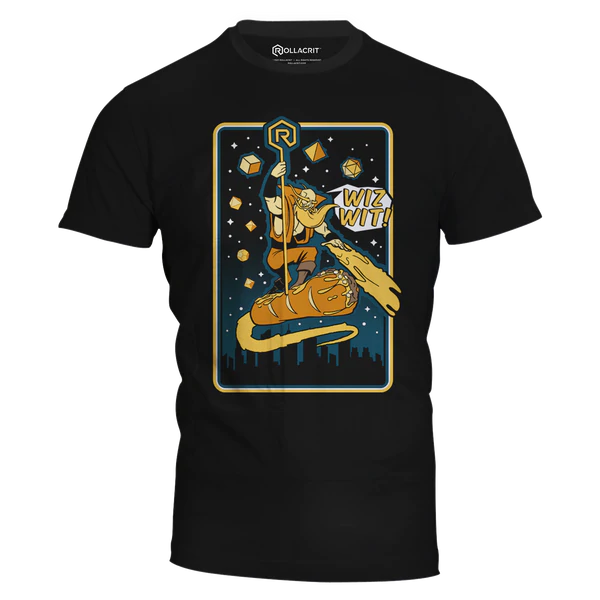
Conrad: We have a core group artist that we work with regularly, in order to come up with the ideas. We love promoting artists, and that’s something that we’re also even trying to expand on our site, featuring the artists and showing off their collections that they’ve been doing.
Even though it’s branded on a Rollacrit, the people we work with are incredibly talented people, and they deserve to be recognized as well. Because I don’t think there’s enough recognition in the space of the people who create the art on top of that, for board games. So we’re trying to enhance that side.
But the other side of it too that we keep working with similar or the same artists, it’s because we try to keep that feeling of authenticity. If you constantly have different people coming through all the time, it’s hard to retain that feeling of what Rollacrit is about.
Being able to keep that all still consistent is a challenge, but it’s a challenge that we really believe in. Because we want a Rollacrit product for Catan, to feel like a Rollacrit product still. You know what I mean? We want a Gen Con product that we make to still feel like a Rollacrit product, but it speaks more to that Gen Con audience.
So hopefully, when you see something that’s made by us, even though it might not have our logo necessarily smacked on it, or maybe it does, you would know that Rollacrit had to make this.
Dan: So how’s the Gen Con partnership been? And how does that help you get your name out with gamers working as their official merch person?
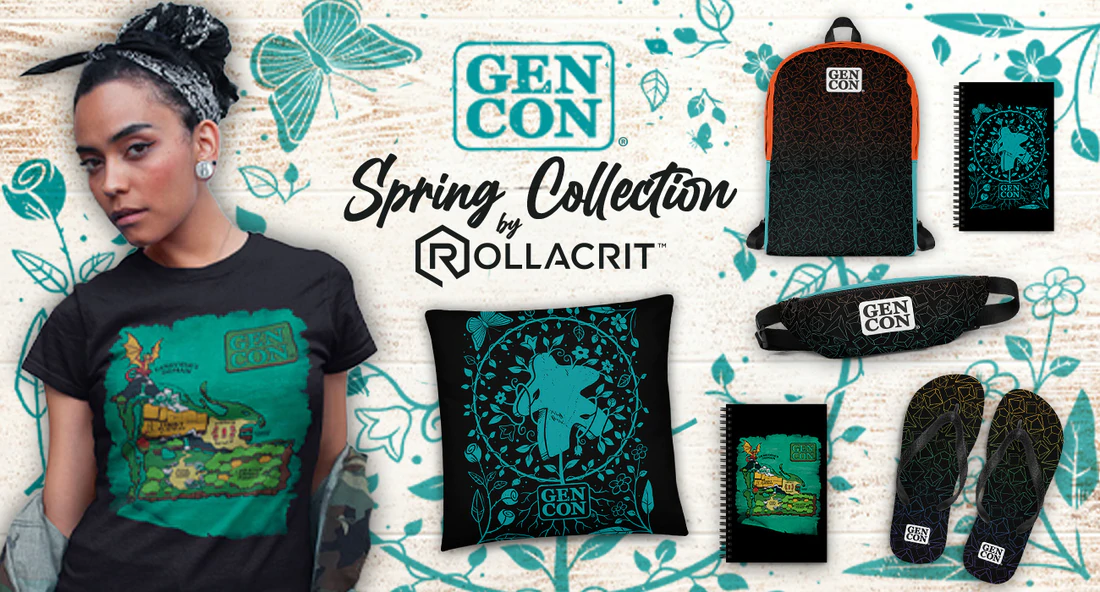
Erin: I think a lot of people think we’re Gen Con, so we’re like Gen Con employees. Like people ask us at Gen Con, like, where to go and get things through Gen Con. We don’t work for Gen Con. So I think it’s because we’re a new company, so hopefully people start recognizing what Rollacrit is beyond the Gen Con store.
We were very lucky to be in at this time, through this transition. We did everything we could to get into this space, because when we signed on it was supposed to be a virtual show last year. We had four months to put the entire show on and make all products work during a time where you couldn’t even find shirt blanks.
Dan: I’m from Indianapolis, I’ve been going to Gen Con for years. My friends and I were always baffled, we’re always like, why would you go to Gen Con and buy a shirt that just says Gen Con on it? Like, again, why would you? And people were confused about the booth.
No one ever thought about, and then at PAXU you had your own booth, you had all the stuff out, and it was a really popular booth, because I think people did start making that connection. And I’m sure other cons, if you’ve been in other cons, the same things happened.
Erin: Yes, and that’s why this year we’re really lucky to have the Gen Con store. This year will be the first time that we have a Rollacrit booth on the show floor demoing Heroes of Barcadia physically. We will have a small selection, not as probably as big as Pax Unplugged, just because we don’t have a 10 x 20 space there. Have some Rollacrit product too, so that people can see where all the aspects of what Rollacrit is.
Dan: Are there any games you guys really like right now? Any game you have been playing at the office?
Conrad: I have a couple young kids, so like all the games that I get to play now, are not the games that I’ve wanted to play. So I’m like living in Uno, and Hi, Ho Cheerio. I played Headbanz the other day, you know what I mean? So like those kinds of things have been where I’ve been, that’s been my board game universe lately.
Erin: I mean, when I can get people to play with me, because I’ve played it so much that people hate playing with me now, but Betrayal At Baldur’s Gate. It’s so ridiculous, and it changes every time, which is great. And the hunts are always crazy, and they’re so hard.
I have to play some lighter games usually, too, I’m always playing Settlers of Catan, I’m always playing Azul, I just got the new version now. But there is stuff I still have sitting in my box, things that we bought that are just sitting there for months like Hero Quest.
Conrad: We even did a company D&D game the other day, just to start a campaign, so that everybody can kind of get together and play on Roll 20. And one of our marketing people ran it as DM. All of us have been so busy trying to get all this stuff together that we have to remind ourselves every once in a while, to just like, this is a fun space to be in, let’s play some games.
Dan: All right. So we’ll catch you at Gen Con, obviously. Is there anywhere else we can where people can find you guys and check out your stuff in person?
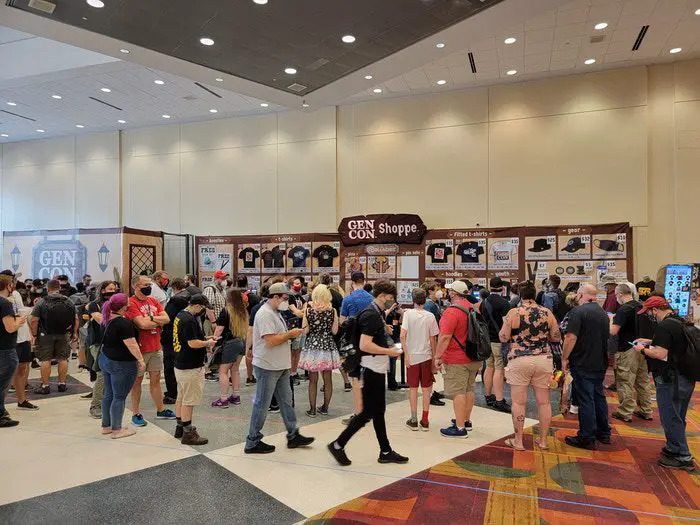
Erin: So we won’t be there in person ourselves, but we will have people playing and demoing Heroes of Barcadia at Origins. So if you find yourself there, feel free to just swing over and take a look at the game and give it a little test drive.
Images via Rollacrit
Have strong thoughts about this piece you need to share? Or maybe there’s something else on your mind you’re wanting to talk about with fellow Fandomentals? Head on over to our Community server to join in the conversation!

